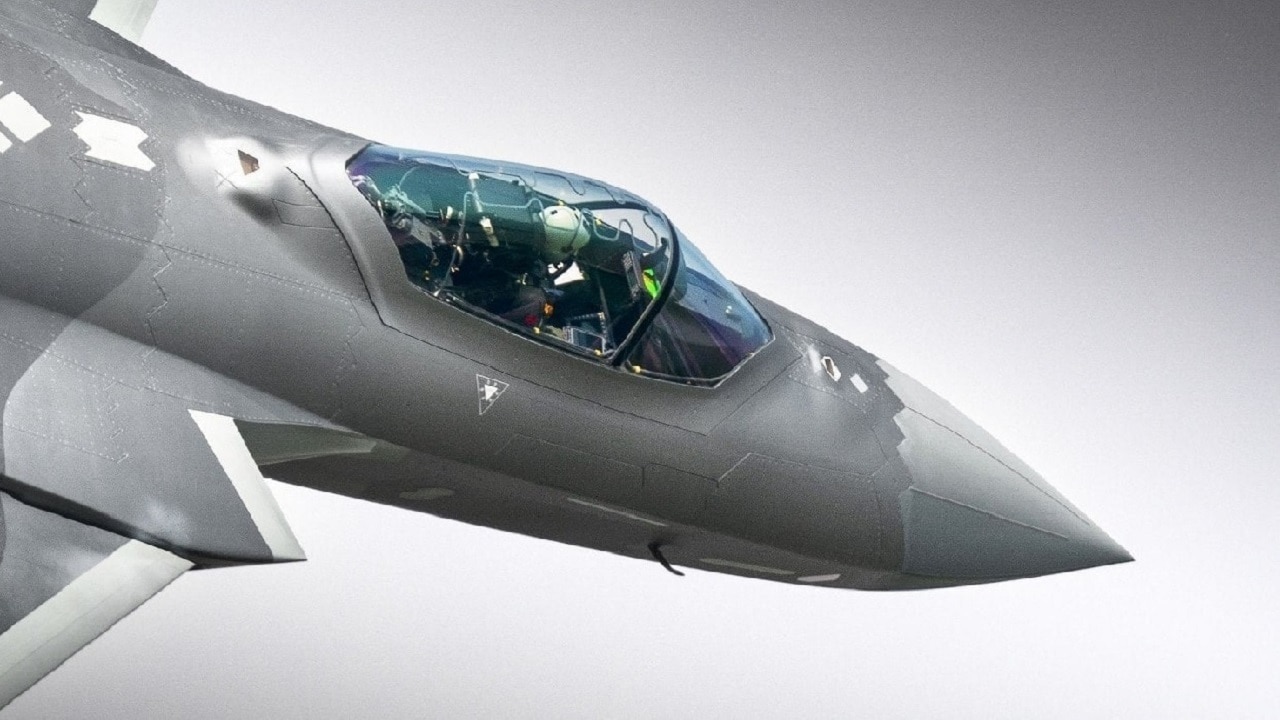The J-20 Gets a Big Upgrade: In late August, China’s People’s Liberation Army (PLA) carried out military drills around Taiwan. Beijing expressed that these joint naval-air and combat readiness patrols are meant as a “serious warning” to Taipei. Tensions between China and the island nation have escalated in recent months, and fears of a confrontation have grown.
If the PLA is directed to attack Taiwan, its aerial capabilities will front the effort. Beijing’s most advanced fighter is the Chengdu J-20, a capable airframe that is a direct competitor to America’s own fifth-generation F-22 Raptor and F-35 Lightning II.
A Brief Overview of the J-20 Mighty Dragon
China’s drive to modernize its air force is in full swing. In order to compete with America’s air superiority platforms and its overall aerial dominance, Beijing has allocated significant funds to design advanced platforms.
China’s J-20 “Mighty Dragon” derived from the J-XX program in the 1990s. Manufacturers Chengdu and Shenyang proposed designs for Beijing’s fifth-generation platform. The PLA Air Force ultimately chose Chengdu’s smaller model to enter production.
The J-20 was in part conceptualized to match and perhaps surpass America’s aerial abilities. Although the Mighty Dragon has formidable attributes, Western analysts are not convinced its true capabilities live up to Chinese officials’ promises.
Regardless, China’s naval and aerial prowess is undeniably growing. The U.S. cannot slow its own efforts to modernize as tensions rise between Beijing and Washington.
Should the U.S. Worry?
Over the summer, the PLAAF appeared to give the J-20 a serious upgrade.
Just days after the Paris Air Show, videos circulated depicting a J-20 equipped with two Woshan-15 (WS-15) engines. According to Beijing, these indigenous engines provide a far greater range and payload performance for the Mighty Dragon than the jet’s previous Russian-designed AL-31FN engine.
While the new engine could be a step up, it might not be as powerful as Beijing asserts. Last year, an analyst from the Yuan Wang military think tank in Beijing reported that the engine powering the F-35 remains at least 10 years ahead of the WS-15. Additionally, “China has so far just matched the American engines in some areas, but not in overall performance. It’s also not meaningful to emphasize one area, because military confrontation is about a competition of systems and a contest of joint operational capabilities.”
The Mighty Dragon can carry half a dozen missiles in its main bay and two lateral bays.
American officials are also confident that the jet is capable of beyond visual range engagements, meaning they could lock on to an enemy airframe and launch a missile from 100 miles away, instead of dogfighting.
Other details surrounding the J-20 remain scarce. While some industry experts have dismissed the Chinese fighter as “nothing to worry about,” the airframe’s advanced features showcase a huge leap forward for Beijing’s avionics.
Maya Carlin, a Senior Editor for 19FortyFive, is an analyst with the Center for Security Policy and a former Anna Sobol Levy Fellow at IDC Herzliya in Israel. She has by-lines in many publications, including The National Interest, Jerusalem Post, and Times of Israel. You can follow her on Twitter: @MayaCarlin.

